Creating a disabled bathroom can seem intimidating, but with proper design and knowledge of disabled bathroom rules, you can make disabled visitors feel comfortable. There are several ways to make your disabled bathroom accessible and safe, from grab rails to level access showers.
To guarantee your family appreciates your bathroom, design and decorate it with everyone’s well-being in mind. If you have older relatives or family members with disabilities, you’ll want to make sure the bathroom is constructed and fitted for them. These recommendations will show you how simple it is to make modifications to make your surroundings more accessible.
Great Ways to Make Your Bathroom Disable Friendly…
1. Consider the Layout of the Space

Make your bathroom accessible and comfortable for disabled friends and family. Check your bathroom layout. Consider rearranging furniture or fixtures that block doorways or walkways. Depending on accessibility demands, you may wish to build grab bars or elevated platforms around the shower or bathtub. Any changes will improve bathroom accessibility and comfort.
2. Identify and Remove Any Potential Hazards
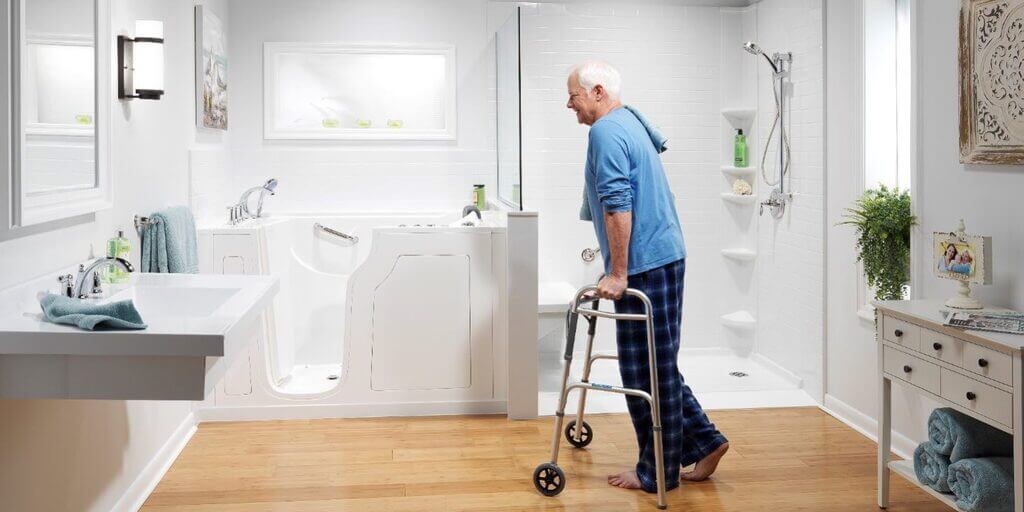
A disability-friendly bathroom ensures safety and comfort. Before renovating, evaluate potential hazards to provide an accessible bathroom. It involves checking for slick floors or carpets and mats, providing chairs or grab bars, and making sure the entrance to the vanity is clear and easy to navigate. Proper lighting, including color temperature and dimmable nightlights, should be considered. Replacing or adding features can minimize risks and improve accessibility for disabled individuals.
3. Install Handrails and Supportive

Making your bathroom disability friendly with railings and supported features is easy. Installing grab bars and railings will make it easier for the elderly and anyone with restricted mobility to maneuver around the bathroom. Having varying heights also makes things easier for everyone. Showering can be made easier with the addition of a padded stool, plus a lower toilet can be extremely helpful. Your bathroom will be more accessible and inviting with these easy convenience-minded changes!
4. Consider Reach Requirements

Making your bathroom accessible is simple and will be very appreciated. Installing a handrail, extending and leveling the entryway, using specially designed fixtures, or converting a bath into a walk-in shower can improve bathroom accessibility.
Wheelchair users benefit from adjustable-height sinks and extra room surrounding the toilet and washbasin. To keep everything accessible, add wall or base cabinet storage. These upgrades will improve your bathroom’s freedom and enjoyment.
5. Remove Slip And/or Trip Hazards
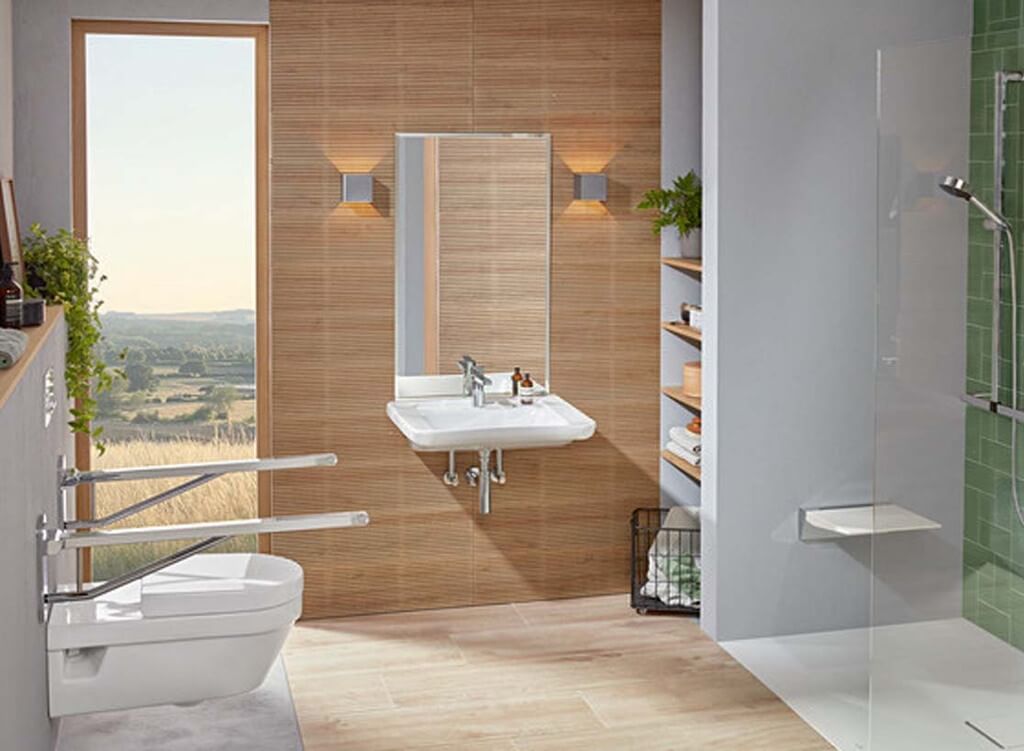
By absorbing water, preventing slips, and increasing traction in wet places, non-slip mats lessen the risk of falls. Other surfaces should be evaluated for barriers and mobility, such as toilet seat height, shower doors, and showerhead switching. Disability-friendly toilets and bathrooms make for a safe home for everybody.
6. Add an Emergency Cord
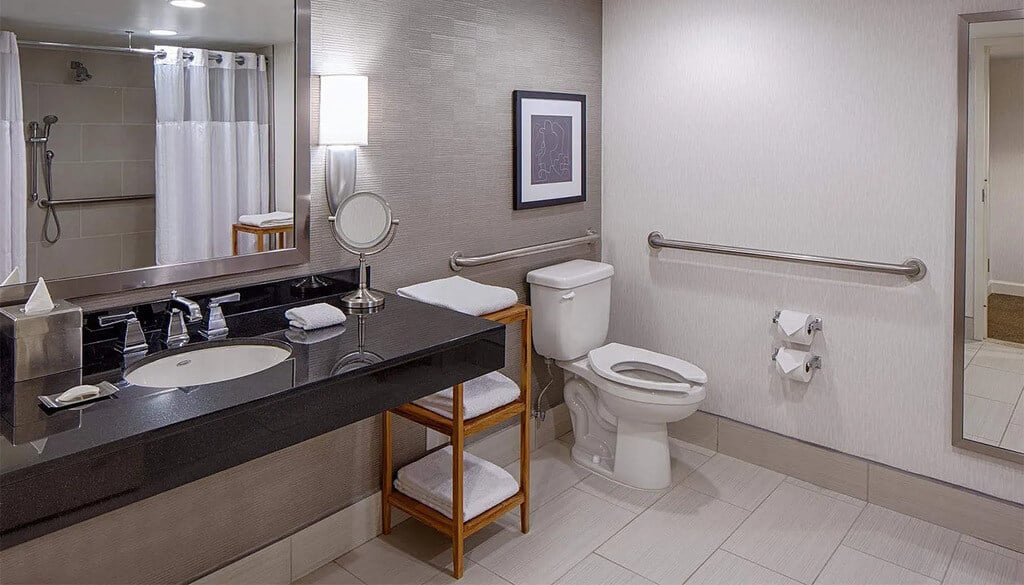
Increasing disability access to bathrooms is a great method to guarantee that people of all abilities can use the facilities in peace and comfort. The installation of an emergency cord or button gives people with disabilities the peace of mind that aid is close at hand in case of an emergency. If a disabled person is feeling wobbly in the shower, for example, this device can notify family members or carers. Disabled persons no longer need to worry about their safety when using the bathroom.
7. Use Lighting and Markings to Make Bathroom Access Easier

Installing grab bars and wider entrances aren’t the only options to make your restroom accessible to persons with disabilities. Increasing the area’s visibility can also help make it more accessible for persons with mobility issues. The location of appliances, switches, and outlets should all be clearly labeled. Bringing in natural light is another way to improve visibility in the lavatory.
Consider installing cellular blinds in place of your current window coverings to let in light while maintaining your privacy. Mirrors and glossy paint both reflect light and give a space a contemporary feel while increasing visibility. Taking these measures will greatly improve the bathroom’s usability for all of your guests.
8. Improve Ventilation and Air Flow
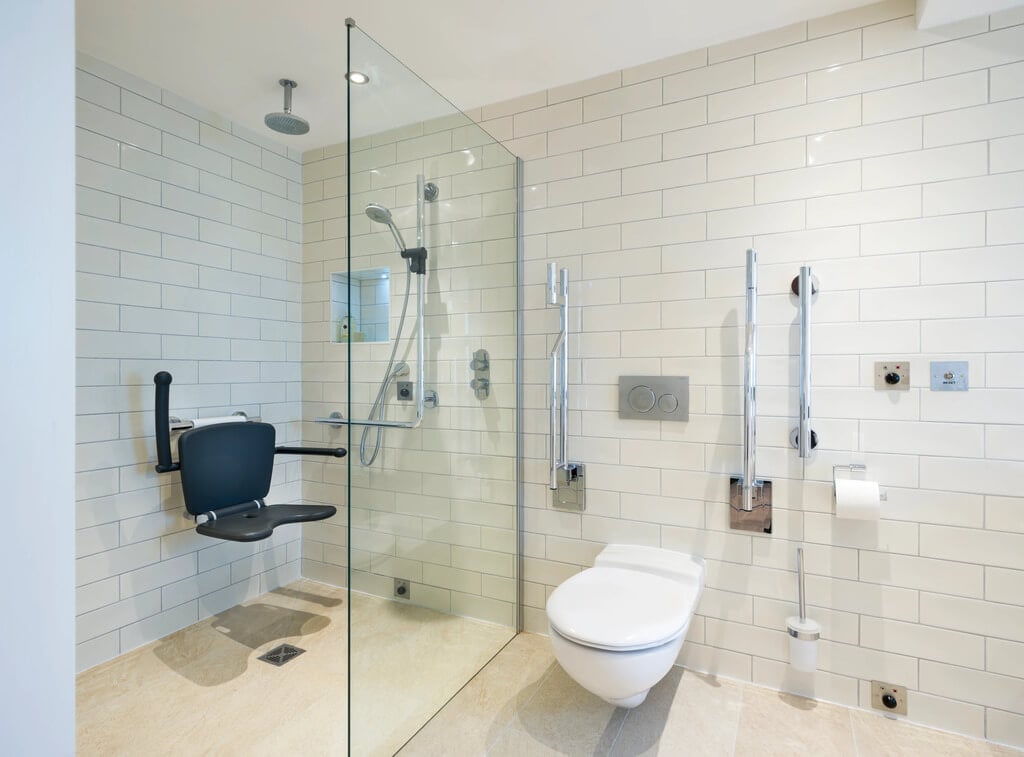
Making your bathroom accessible for people with disabilities shows that you care about their comfort and safety. Increasing ventilation is a vital part of this procedure since it reduces the humidity that can cause breathing difficulties and also helps with unpleasant odors in bathrooms.
Disabled persons may feel more at ease using the bathroom if it has fresh air and good ventilation, which can be achieved by installing a fan or even just windows. Combining this with other modifications for the ease of the disabled individual, such as grab bars or an adjustable showerhead, is possible.
In addition, those whose health needs are best served by enhanced circulation can rest easier in spaces with adequate ventilation. Improving the ventilation in your bathroom is a simple way to demonstrate that you care about the needs of individuals in your community by installing exhaust fans and making other aesthetic modifications.
9. Invest in Disability Friendly Smart Home Technology
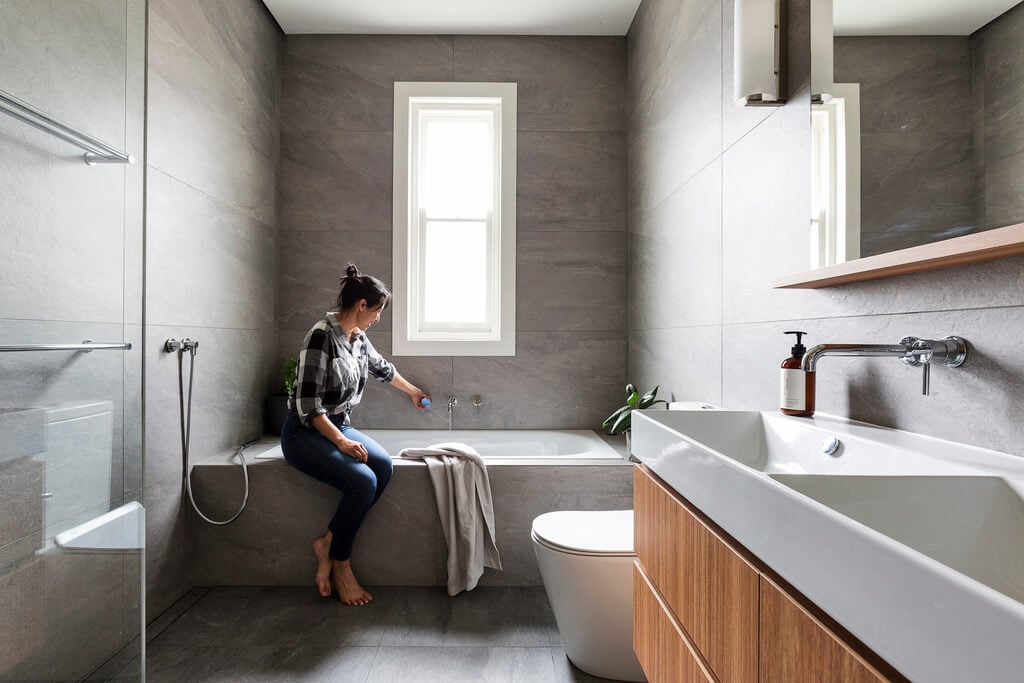
People with disabilities can benefit greatly from accessible bathroom technology such as smart toilet seats, smart taps, voice-activated lighting, and other similar advancements beyond the standard fare.
People with mobility challenges or a wide range of disabilities can benefit greatly from a smart toilet seat because it provides comfort, eliminates manual transfers, minimizes physical exertion, and encourages independence. A smart home technology system can go above and beyond just playing your favorite soundtrack and can make a home more accessible and welcoming.
10. Swap a Standard Bath for a Walk-In Bath
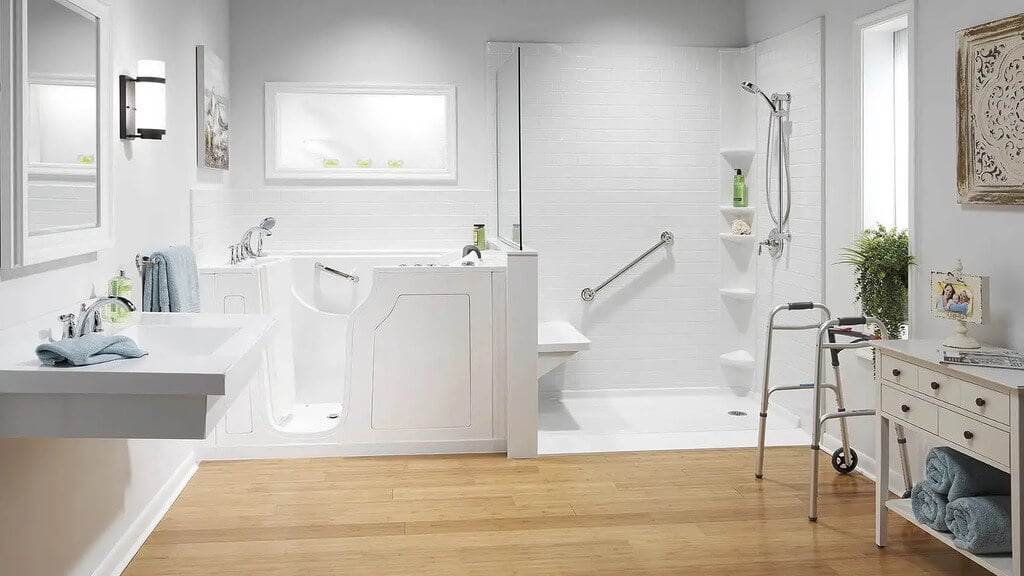
Disabled bathrooms benefit from walk-in baths because they provide simple entry and exit without lifting or stepping over a high edge. Level-access showers and shower seats also make showering easier for people with mobility difficulties. Your local council may offer a grant to assist you install disabled bathroom fixtures and accessories for disabled people in your house, depending on where you live and your circumstances.
Final Words
Ultimately disabled bathrooms should be constructed so that disabled and elderly persons have safe, accessible, and comfortable facilities and as we have shown, this is possible with several solutions. With the appropriate design and fixtures, you can make disabled visitors feel welcome and appreciated in your disabled-accessible bathroom.
Keep reading:

